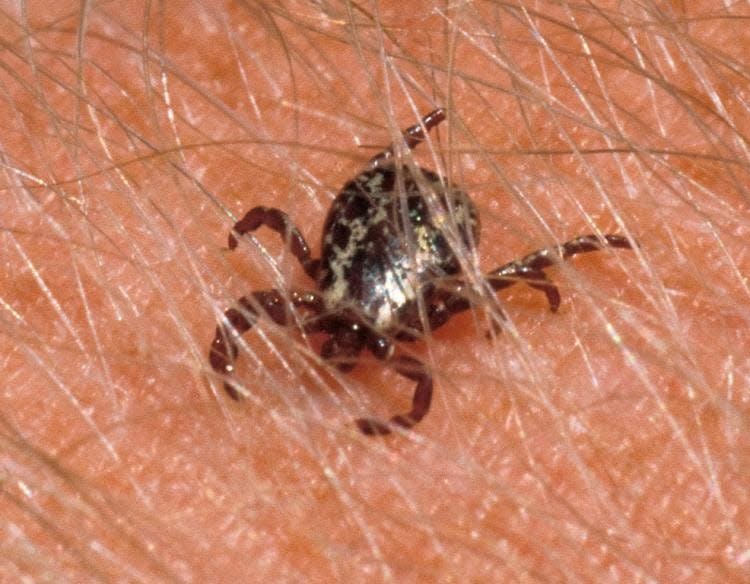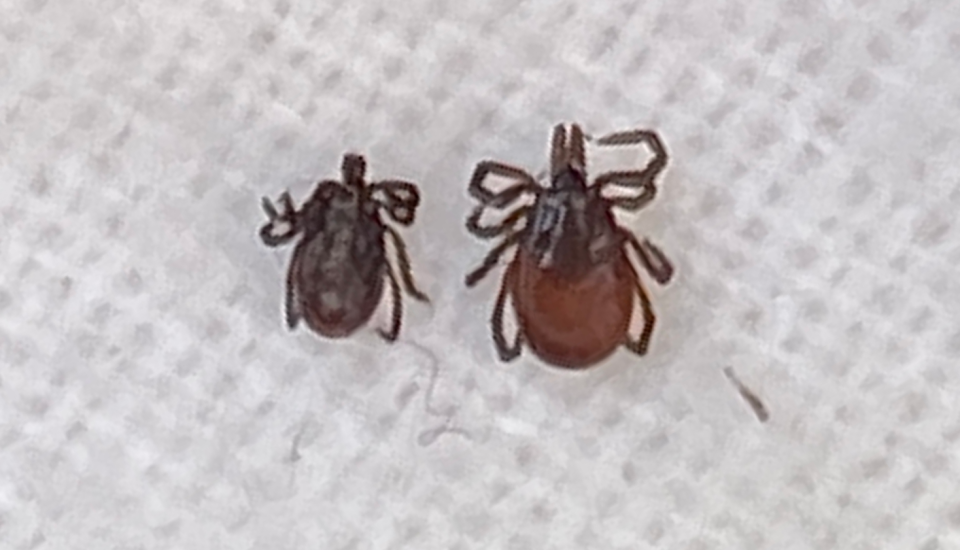Got bit by a tick? Don't chuck it. A Kirksville university is still looking for specimens
You may have already noticed tick season is underway if you've caught one of these arachnids scurrying across your arm or latched.
Tick season is conventionally April through July, but they can be found throughout the year. Known for drinking blood from humans and other mammals, ticks can carry deadly diseases, like Lyme disease, Rocky Mountain spotted fever, Ehrlichiosis, Bourbon virus, Heartland virus, and other diseases.
A.T. Still University in Kirksville started collecting ticks April 2021 in an effort to create a database for what tick species are present at a county level and which ones folks are interacting with, said Senior Research Associate Deborah Hudman. The information will then be passed on to Department of Health and Senior Services as well as the CDC.
More: MDC urges 'citizen scientists' to mail in ticks to university as part of two-year study
"Today, we've received 16,438 ticks," Hudman said in a phone interview Tuesday.
So far, the research group has tested about 1,180 of them for Borrelia species, which includes the agent that causes Lyme disease, according to Hudman.

"We are also looking for Ehrlichia, Francisella, and Rickettsia species," she wrote in her online research notes. The research has "found a human pathogen in 55 ticks for an overall infection rate of 5%."
Besides getting lots of arachnids in the mail, Hudman is reading where and how people found them. The most common area where folks are finding the ticks is their beds, Hudman said she was surprised to learn.
"If you've got an indoor, outdoor cat (or) dog and they hop up onto the bed, depending on whether or not you're treating them with something that might repel ticks, then they may not lodge into your pet, but they may drop off looking for another blood meal," Hudman said. "So, that's something to be aware of."
There's still a lot of testing to be done, and all but one county, New Madrid, has submitted at least one tick for testing. Hudman is hoping to test 10 adult ticks from each county.

There's been such an abundance of lone star and American dog tick submissions that Hudman said no more are necessarily needed. However, she is hoping to receive specimens for black legged ticks and Gulf Coast ticks before the submission deadline ends in August.
"That allows me time over the winter to hopefully complete all of the testing for the pathogens," Hudman said.
The results may be released by next summer. (A submission form may be found here or by visiting https://www.atsu.edu/pdf/atsu-ticks-tick-borne-pathogens-submission-form.pdf.)

"If you find 20 ticks on you and you go for a hike, all 20 of those can go in one bag," Hudman said.
If you do mail out a tick, remember to place it in a bag with some moisture, like a few water droplets on a blade of grass. Then, bag up that first bag before placing it into an envelope.
"It's a whole lot easier to identify it if I have it alive," Hudman said, and that the mailing process is tough on a tick. "The more intact they are, the easier it is to identify and then the fresher they are, the better."
"We don't want the mail folks having ticks run around on them," she added.
If you find a tick that has been lodged on yourself, keep it for about 10 days to watch for flu-like symptoms. If they occur, you should take the bagged tick to the doctor and get checked out.
"If they're not developing any flu-like symptoms, then go ahead and mail the tick in," Hudman said.
The mailing address is: A.T. Still University Deb Hudman, Senior Research Associate Dept. of Microbiology & Immunology 800 W. Jefferson St. Kirksville, MO 63501.
Sara Karnes is an Outdoors Reporter with the Springfield News-Leader. Follow along with her adventures on Twitter and Instagram @Sara_Karnes. Got a story to tell? Email her at skarnes@springfi.gannett.com.
This article originally appeared on Springfield News-Leader: Kirksville university is still looking for tick specimens

